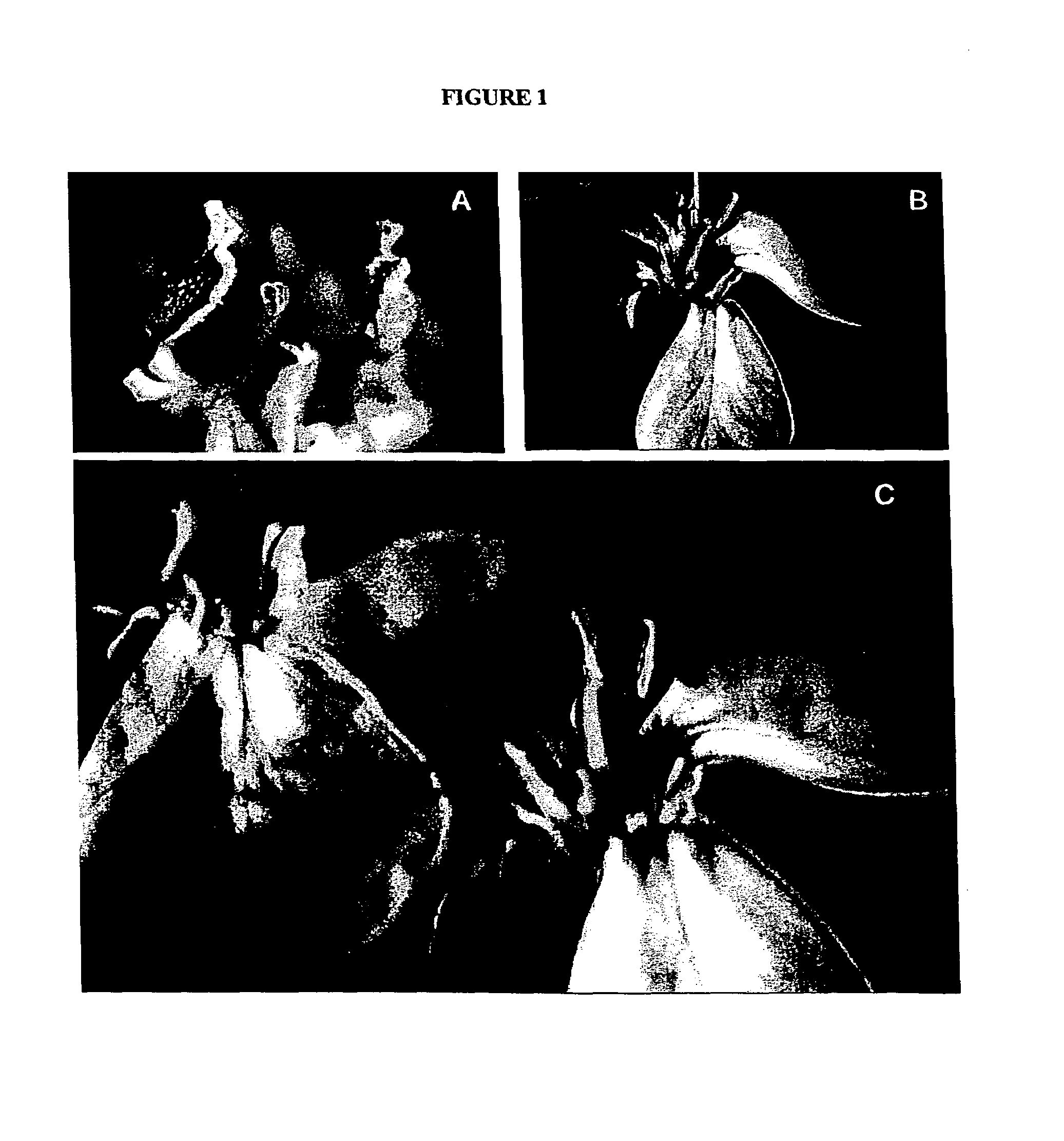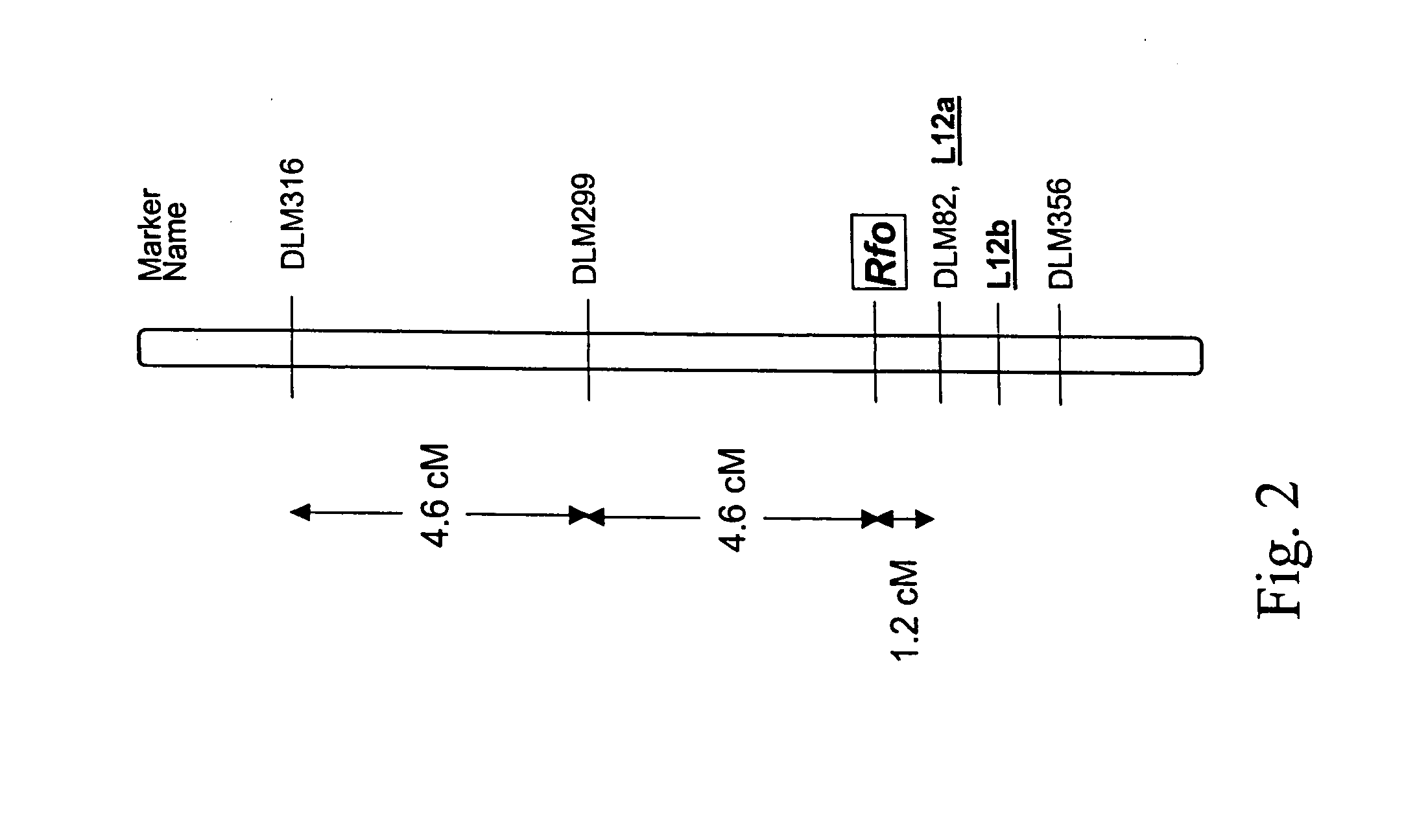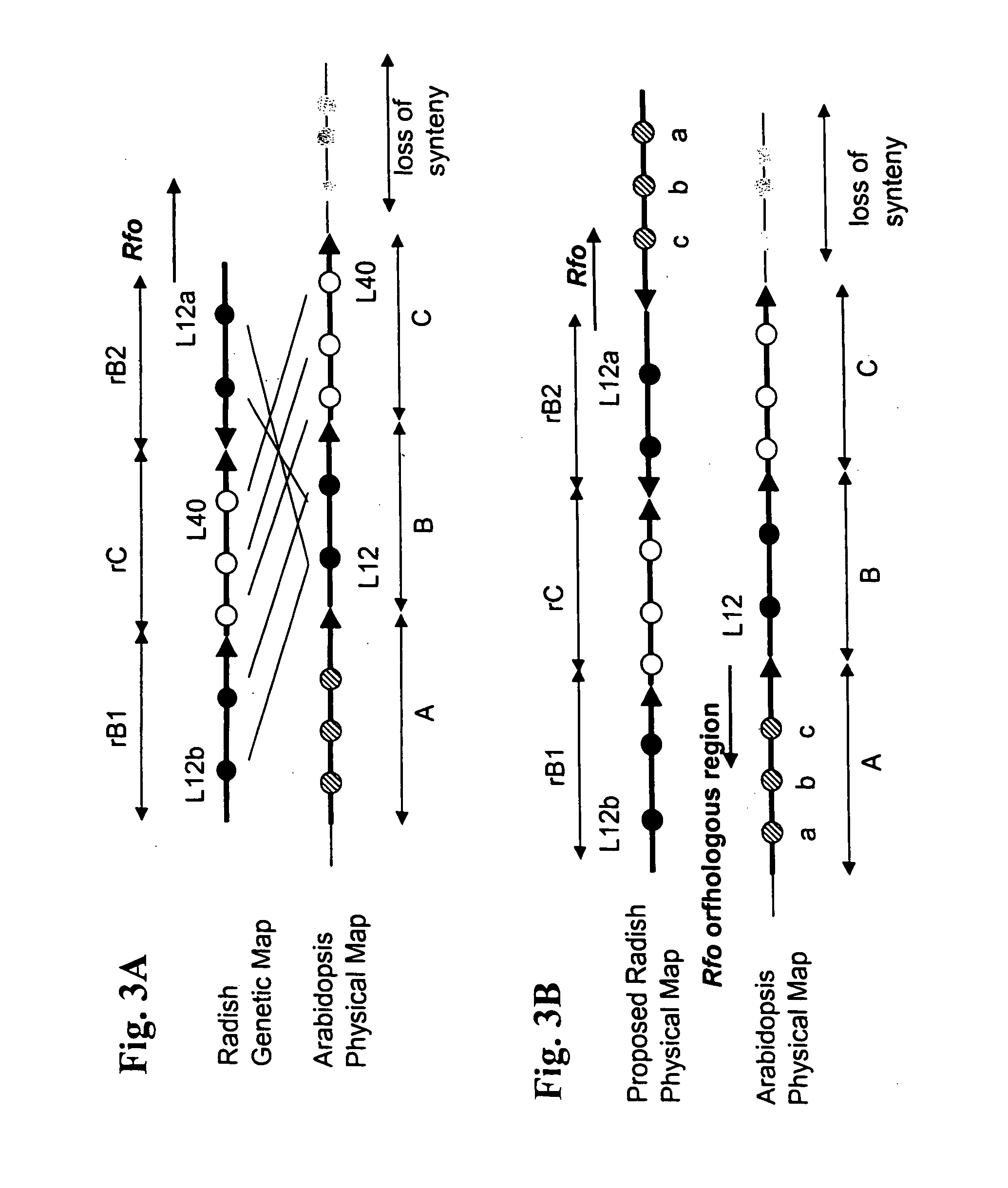Nuclear fertility restorer genes and methods of use in plants
a technology of nuclear fertility and restorer genes, which is applied in the field of nucleic acid sequences encoding proteins, can solve the problems of problematic elevation of glucosinolate levels in hybrids produced using these lines, and inability of plants to produce viable pollen, etc., to achieve the effect of restoring male fertility and increasing the production of viable pollen
- Summary
- Abstract
- Description
- Claims
- Application Information
AI Technical Summary
Benefits of technology
Problems solved by technology
Method used
Image
Examples
examples
Materials and Methods
Plant Growth, DNA Isolation, Marker Analyses and Library Construction
[0124]Radish plants were grown in growth chambers with a 16 hour photoperiod cycle, at 20° C. day and 15° C. night. To self-fertilize these plants, a bud that was about to open was teased apart and its anthers and petals removed. An anther from another flower on the same plant was picked and used for pollination. The pollen was applied directly to the stigma. This procedure was repeated on 3 or 4 buds of the same branch. Any nearby open flowers were detached. A white paper crossing bag was used to cover the buds. The plants were then placed in a greenhouse to allow for seed maturation. Leaf material was used for DNA extraction. DNA extraction, restriction enzyme digestion, Southern blotting and RFLP analysis were carried according to Cheung W Y et al (1997, Theor Appl Genet 95:73-82). Small scale DNA preparations suitable for PCR analysis were according to Cheung W Y, Hubert N, Landry B S (1993...
PUM
| Property | Measurement | Unit |
|---|---|---|
| concentrations | aaaaa | aaaaa |
| concentrations | aaaaa | aaaaa |
| nucleic acid | aaaaa | aaaaa |
Abstract
Description
Claims
Application Information
 Login to View More
Login to View More - R&D
- Intellectual Property
- Life Sciences
- Materials
- Tech Scout
- Unparalleled Data Quality
- Higher Quality Content
- 60% Fewer Hallucinations
Browse by: Latest US Patents, China's latest patents, Technical Efficacy Thesaurus, Application Domain, Technology Topic, Popular Technical Reports.
© 2025 PatSnap. All rights reserved.Legal|Privacy policy|Modern Slavery Act Transparency Statement|Sitemap|About US| Contact US: help@patsnap.com



